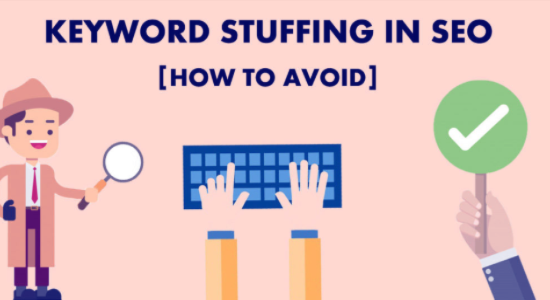
In the ever-evolving world of search engine optimization (SEO), one term that continues to be a topic of discussion is keyword stuffing. As an expert in digital marketing, I’ve seen how this outdated tactic can negatively impact both user experience and search rankings. In this article, we’ll explore what keyword stuffing is, why it’s harmful, and how to avoid it to ensure your content remains relevant and valuable.
Understanding What Keyword Stuffing Is
Keyword stuffing refers to the practice of overloading a webpage with keywords or phrases in an attempt to manipulate search engine rankings. This typically involves repeating the same keyword multiple times in a short span of text, often to the point where the content becomes unnatural and difficult to read.
The Origins of Keyword Stuffing
In the early days of SEO, search engines relied heavily on keywords to determine the relevance of a webpage to a user’s query. Webmasters would then try to “stuff” as many keywords as possible into their content to rank higher for specific terms. However, as search algorithms became more sophisticated, this approach was deemed unethical and counterproductive.
How Does Keyword Stuffing Work?
![]()
There are two main types of keyword stuffing:
1. Visible Keyword Stuffing
This occurs when the excessive use of keywords is clearly visible to users. For example, a sentence like “Buy aluminum coffee pods today, aluminum coffee pods, aluminum coffee pods” is a classic case of visible keyword stuffing. This not only disrupts readability but also makes the content seem spammy.
2. Hidden Keyword Stuffing
Hidden keyword stuffing involves placing keywords in areas of the webpage that are not easily visible to users. This could include:
– Using the same color for text and background.
– Positioning text behind images.
– Placing text outside the visible area.
– Using tiny, illegible fonts.
While these tactics may have worked in the past, modern search engines like Google have become adept at detecting such manipulative practices.
Why You Must Avoid Keyword Stuffing
Avoiding keyword stuffing is crucial for several reasons, including maintaining a good user experience, avoiding penalties from search engines, and preserving the credibility of your brand.
Goes Against Spam Policies
Google has strict guidelines against spammy practices, and keyword stuffing is considered a form of spam. If your website is found to be engaging in keyword stuffing, it may be penalized or even removed from Google’s index entirely. This means your website won’t appear in search results, which can be devastating for your business.
Uses Black Hat SEO Techniques

Keyword stuffing is classified as a black hat SEO technique, which means it violates the ethical standards set by search engines. While some webmasters might see short-term gains from using these methods, the long-term consequences can be severe. Search engines are continuously updating their algorithms to detect and penalize such tactics, making it increasingly risky to rely on them.
Affects User Experience
One of the most significant drawbacks of keyword stuffing is its negative impact on user experience. When content is overloaded with keywords, it becomes difficult to read and understand. Users are likely to leave your site quickly if they find the content unhelpful or poorly written. This leads to higher bounce rates and lower engagement metrics, which can further hurt your SEO efforts.
Can Reduce Brand Perception
Excessive use of keywords can also damage your brand’s reputation. If users perceive your content as spammy or unprofessional, they may lose trust in your brand. This can lead to a decrease in customer loyalty and a negative impact on your overall business.
Lowers Search Ranking
Ironically, keyword stuffing can actually lower your search rankings. Search engines prioritize high-quality, relevant content that provides value to users. If your content is filled with unnecessary keywords, it may not rank as well as content that is naturally optimized and focused on user intent.
How to Avoid Keyword Stuffing
Avoiding keyword stuffing requires a strategic approach that focuses on quality content, natural language, and user intent. Here are some practical steps you can take:
Read Your Content Before Posting
Before publishing any content, read it aloud to identify any areas where keywords might be overused. If the text feels forced or repetitive, consider rephrasing or removing the excess keywords.
Use a Free Readability Tool

There are numerous free tools available that can help you assess the readability of your content. These tools can highlight areas where keywords might be overused and suggest improvements to enhance clarity and flow.
Prioritize the Audience
Instead of focusing solely on keywords, write with your audience in mind. Create content that addresses their needs, answers their questions, and provides real value. This approach will naturally incorporate keywords without overstuffing.
Earn Backlinks Strategically
Rather than trying to manipulate search engines through keyword stuffing, focus on building high-quality backlinks. Earning backlinks from reputable sources can improve your website’s authority and visibility without resorting to spammy tactics.
Check for Keyword Density
Maintain a keyword density of around 1-2% to avoid over-optimization. This means using your target keyword about once or twice per 100 words. Tools like Google’s Keyword Planner or SEMrush can help you track your keyword usage and ensure it stays within acceptable limits.
The Dangers of Keyword Stuffing with AI Content
With the rise of artificial intelligence (AI) in content creation, the risk of keyword stuffing has increased. AI tools can generate content quickly, but they may also produce repetitive or overly keyword-heavy text if not properly monitored.
AI and Search Engine Algorithms
Search engines like Google now use advanced AI technologies such as BERT and MUM to understand the context and purpose of content. These algorithms look beyond just keywords and focus on the overall quality and relevance of the content. If your content appears contrived or overly repetitive, it may be flagged as low-quality and not ranked highly.
Proofreading is Essential
Even with AI tools, it’s important to proofread your content before publishing. Ensure that the text flows naturally, uses keywords appropriately, and provides value to your readers. This will help you avoid the pitfalls of keyword stuffing while still leveraging the benefits of AI-generated content.
Conclusion
Keyword stuffing is an outdated and harmful SEO practice that can negatively impact your website’s performance and user experience. By focusing on quality content, natural language, and user intent, you can avoid the pitfalls of keyword stuffing and achieve long-term success in search rankings.
As the SEO landscape continues to evolve, it’s essential to stay informed and adapt your strategies accordingly. Remember, the goal of SEO is not just to rank higher in search results but to provide value to your audience. By following best practices and avoiding keyword stuffing, you can build a strong online presence that resonates with both users and search engines.






